2015.03.09 17:49
Take a peek at Tom Wiscombe's "underground" Old Bank District Museum scheme for L.A.
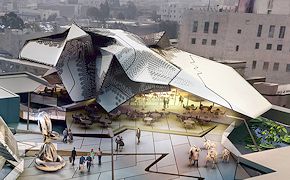
I like the notion of extravagantly exploiting the existing roof-scape. Makes me wonder if that's where urban design should start putting more of its focus--designing a new layer on top of the existing layer. Installations by cargo helicopter all over the place.
2015.04.22 12:19
Archinect's critical round-up for the new Renzo Piano-designed Whitney Museum
Who knows, maybe 100 years from now architecture will be like multiple choice...
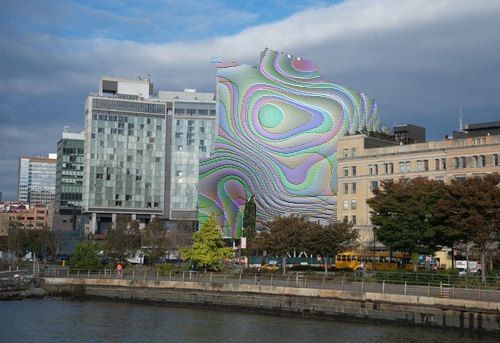
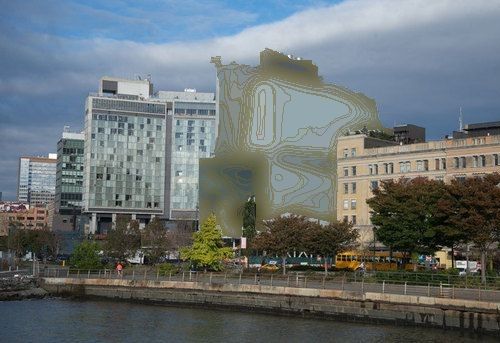
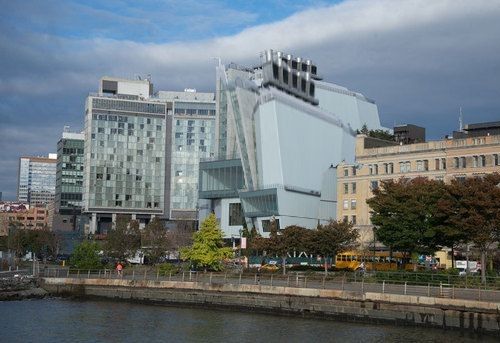
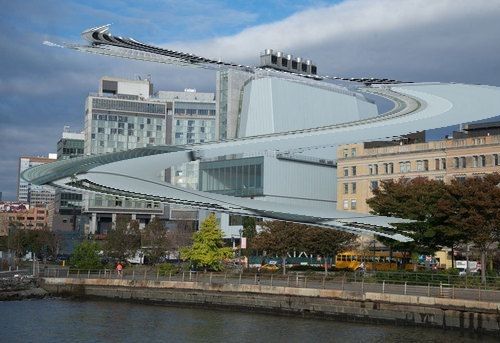
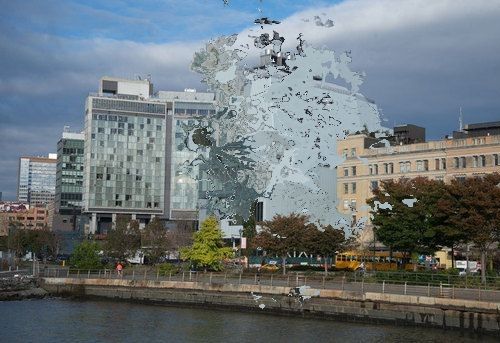
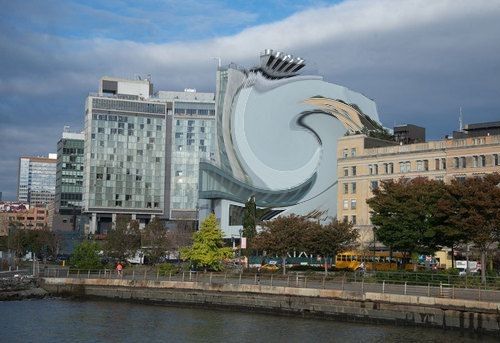
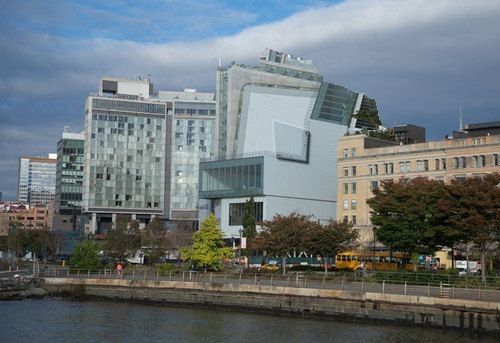
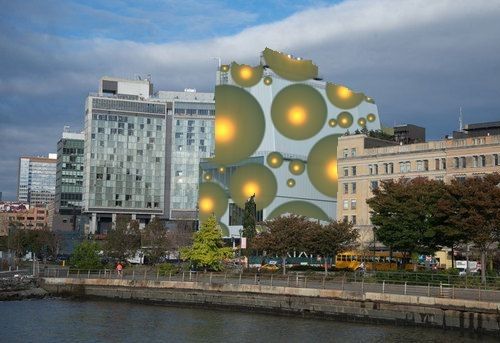
We wouldn't even need critics then, would we?
| |
2015.04.23 13:04
Archinect's critical round-up for the new Renzo Piano-designed Whitney Museum
davvid, thanks. First off, I have yet to own a mobile phone, so I've never used Instagram.
Aha, the New Whitney is almost 3.5 times the size of the New Museum--the New Whitney actually does have the look of a behemoth, doesn't it? Jason already mentioned the New Whitney's welcome interaction with the city, and the notion of windows and balconies/outdoor space on every level certainly reinforces that. Makes me wonder if 'stacked' public institutions of the future will continue to take advantage of higher-up inside-outside opportunities.
Yesterday I was thinking about another compare/contrast of the New Whitney and the Philadelphia Museum of Art. The PMA is about 90 years old now, and it too is at the terminus of an urban greenway--the Benjamin Franklin Parkway. The whole scheme was part of what was called the "City Beautiful Movement"--very 'Beaux Arts' urbanism in conception and execution. Now, in NYC almost a century later, there's the New Whitney at the terminus of another new urban greenway--the Highline. Some might (want to) say this new scheme is all about a "City Ugly Movement," and it may well be not all that "overly attractive", but it seems to be at least a more mature type of urbanism. Donna earlier mentioned the 'ad hoc-ness' of the New Whitney design, and the same may be said about the approach of the urbanism--more using what you have than starting completely over to produce some idealized image. Maybe the "City Bricolage Movement."
Sometime around 2002.11.10 NYTimes architecture critic Herbert Muschamp wrote:
"Elizabeth Diller and Ricardo Scofidio have defined a new building type for the contemporary city: the urban viewing platform. Invention of this caliber doesn't turn up every day. Diller and Scofidio could spend the rest of their careers reworking this one idea over and over again and not be judged harshly for repeating themselves. The basic concept is that good, and its potential applications are various. Many cities will want to try out variations on the theme. But Boston will receive the first authentic edition in 2004, when the city's Institute of Contemporary Art is expected to open its doors."
I went on to criticize this with:
The "urban viewing platform" is NOT a new invention created by Diller and Scofidio. Every time I visit the Philadelphia Museum of Art I also visit a quite remarkable "urban viewing platform."
Anyway, it's now interesting, and indeed fortunate, that the New Whitney Museum has a relative abundance of art viewing platforms and "urban viewing platforms."
2015.05.08 10:40
Architecture Critic Mark Lamster: "We systemically encourage bad building."
The real problem is that new development isn't junky enough.
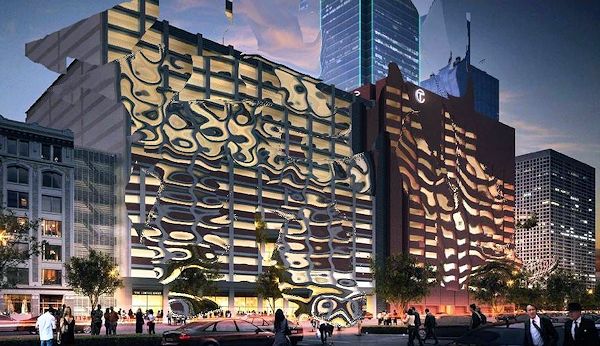
"Junky is so uniquely 21st century. I love all of it!"
| |
2015.05.08 12:20
Architecture Critic Mark Lamster: "We systemically encourage bad building."
"Oh yes, 'Junky Architecture' is indeed uniquely 21st century, but aren't you also glad to see how 22nd century architecture is now even "Junkier"? I mean, I'm like ecstatic over it!"
And if "silly memes" killed the "Folk Art demo opposition," then the "Folk Art demo opposition" must have been a featherweight and the "silly memes" a heavyweight.
2015.05.08 12:42
Architecture Critic Mark Lamster: "We systemically encourage bad building."
Don't just embrace the junk, make it junkier!
2015.05.09 16:49
Interview : March 22, 2014
...also coincidently this morning, was reading "Deleuze's transcendental empiricism" in Continental Philosophy: A Contemporary Introduction, and towards the end of the chapter "eternal return" comes up. Turns out the passages revolve around quotations from Deleuze's Difference and Repetition:
"Eternal return, in its esoteric truth, concerns--and can concern--only the third time of the series. Only there it is determined. That is why it is properly called a belief of the future, a belief in the future." (DR 90)
"The present is the repeater, the past is repetition itself, but the future is that which is repeated." (DR 94)
So just now I looked more into the 90-94 pages of Difference and Repetition, and I'm going to continue reading there. I've owned DR for 18 years now, but I never read much of it. Now I see some potential fruitfulness as to it relating to the notion of "Eternal Wrest will have to do with reenacting with a twist as a constant generator of originality."
Wrest is itself a fruitful word: 1 a : to pull, force, or move by violent wringing or twisting movements 2 : to gain with difficulty by or as if by coercive force, or steady determined labor 3 a : to divert to an unintended, unnatural, or esp. improper use b : to misinterpret or misapply (a law) intentionally c : to deflect or change from a true or normal bearing, significance or interpretation
2015.05.15 17:35
Bjarke Ingels wants to "make the world of the future more like our dreams”
Actually, I do admire BIG's process, but not because it is somehow superior. I admire it because it's an atypical abstraction of the typical architectural design process.
2015.05.23 14:08
Police Shut Down Mosque Installation at Venice Biennale
Perhaps some artist at the next Istanbul Biennale will do an art installation in the form of a functioning Greek Orthodox Church inside Hagia Sophia.
2015.05.24 13:33
Stop the presses: Paul Goldberger's take on critical relevance in the social media age
The "lineage" goes back even more. Among the critics on Venturi's 1950 Princeton thesis are George Howe and Louis Kahn. George Howe was Chair of the Architectural Department at Yale from 1950 to 1954. That's when Louis Kahn (a sometimes partner with Howe during the 1940s) also taught at Yale. Scully writes Louis I. Kahn (1962) wherein he twice cites student Robert Stern whose thesis is on George Howe. Spring 1963 Venturi is a visiting critic at Yale, overseeing a master's class studio on precast concrete, which he teaches with the chair of the department, Paul Rudolph.
(Rounding out the "Philadelphia School" theme) Goldberger wrote a nice piece on "Works of Mitchell/Giurgola" in a+u 75:12.
One of these days I'll computer model the Brant House Addition, a Venturi addition to a Venturi house. Not too dissimilar to Mom goes eclectic.
And regarding Paul Goldberger's take on critical relevance in the social media age, I'm thinking somewhere between "In the future everything (critical) will be an advertisement" and "In the future everything (critical) will be self-published." Yikes, does that mean in the present/future everything critical will be a self-published advertisement?!
|